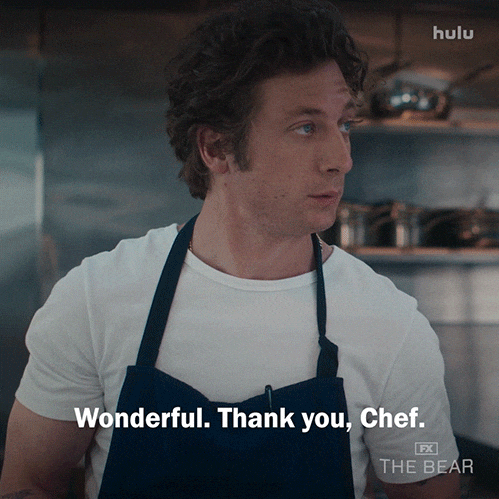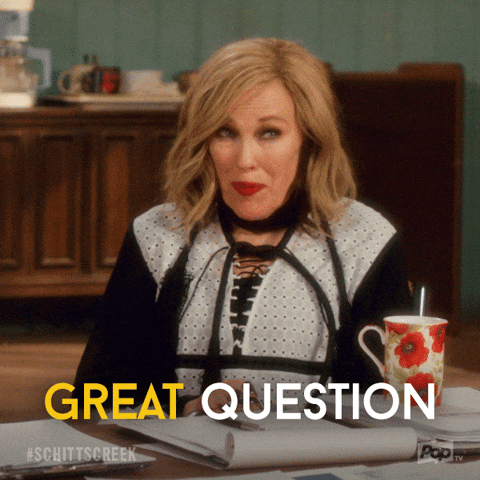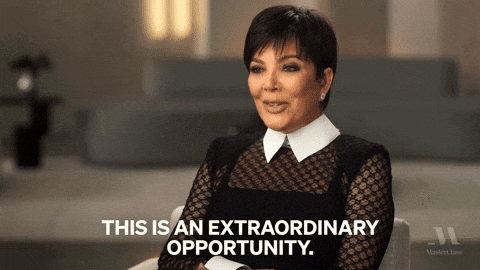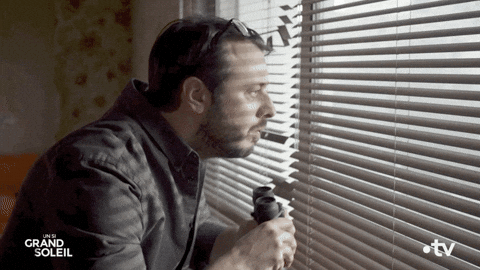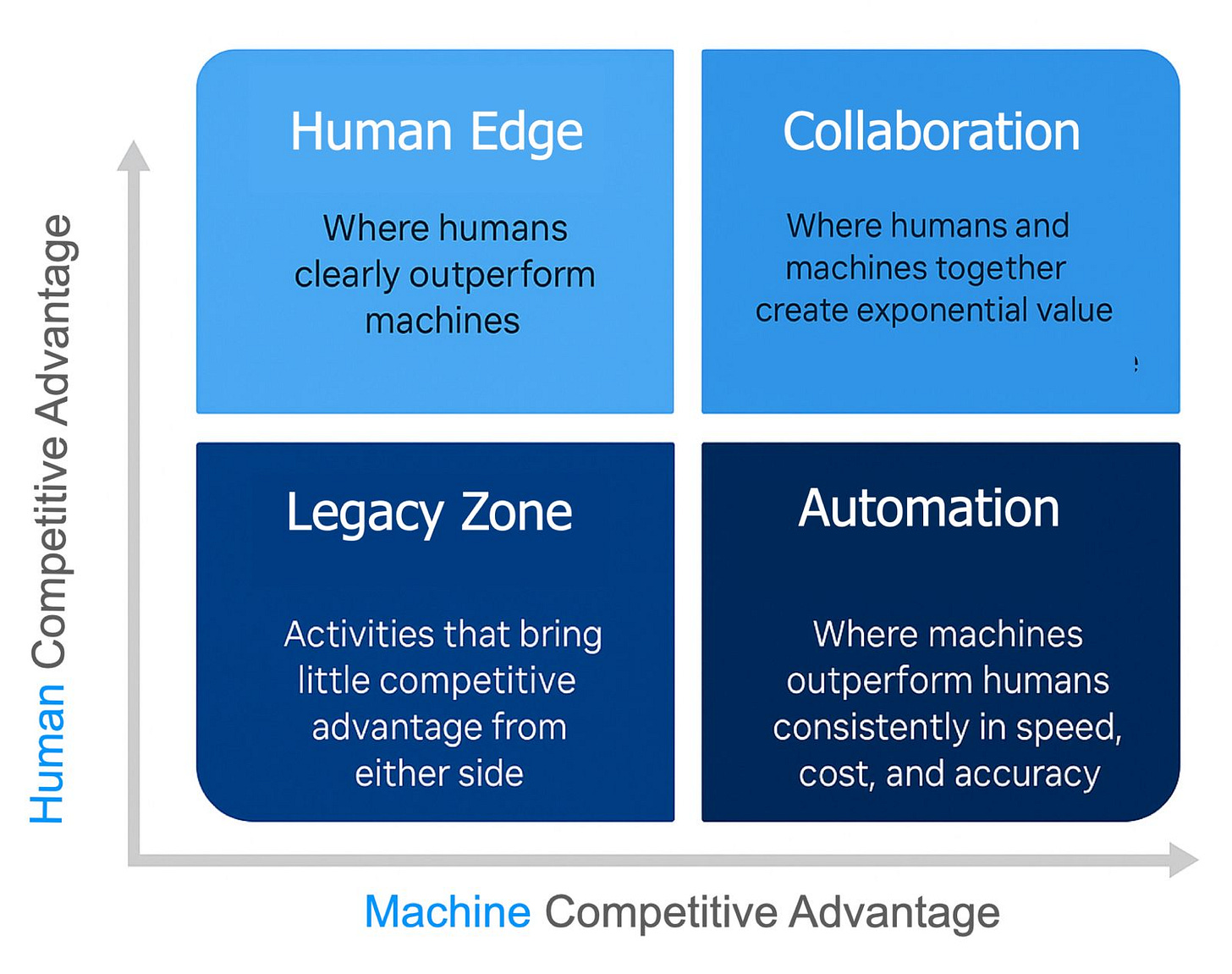The Delegation Dilemma
What to keep, what to give away, and why it matters more than ever.
English speakers, feel free to skip the first part in Italian ! 🇮🇹💙
Amici! Se ancora non conoscete il mio corso "Mastering CX", è il momento perfetto per dargli un'occhiata! Tantissimi professionisti stanno già trasformando la loro Customer Experience con questi contenuti. Trovate tutte le info QUI: https://products.giuseppestigliano.com/ 🚀
Buongiorno everyone 👋
Last week, I watched something interesting unfold at a high-end restaurant in Milan. The sommelier spent ten minutes with a couple, asking about their evening, their preferences, their story. His recommendations weren't just about wine. They were about creating a moment. 🍷
Meanwhile, in the kitchen, machines controlled temperatures, timed multiple dishes, and ensured consistency at a speed no human could match.
Two different types of intelligence, working together. One human, one mechanical. 🤝
This scene captured something I've been thinking about: the art of knowing what to delegate and what to keep.
The new competitive landscape
We're living through the biggest shift in how work gets done since the industrial revolution. 🏭
But this time, it's not just about physical labor. It's about thinking tasks, creative processes, and decisions.
The question every organization faces isn't whether to embrace AI and automation. It's where to embrace them and where to focus on human capabilities.
Get this decision wrong, and you'll either automate away your edge or cling to inefficiencies that machines could handle better. Get it right, and you'll unlock performance that neither humans nor machines could achieve alone. ⚡
The four zones framework
After many conversations with executives and deep thinking on this challenge, I've developed a simple framework. It maps any activity across two dimensions: human competitive advantage and machine competitive advantage.
This creates four zones, each requiring a different strategy:
Zone 1: Human edge
Where humans outperform machines
This is where empathy meets context, where creativity meets nuance, where judgment meets intuition. Think strategic decisions under uncertainty, complex relationship building, or navigating ethical problems. 💭
The sommelier I mentioned? Pure human edge. His ability to read the couple, understand their unspoken needs, and craft an experience. That's human intelligence.
STRATEGY: Invest here. This is where your competitive advantage lives.
Zone 2: Collaboration
Where humans and machines together create exponential value
This is the sweet spot. Human creativity amplifies machine efficiency, or machine precision enhances human judgment. Think AI-assisted diagnosis in healthcare, or data-driven creative campaigns. 🚀
Or consider how architects now use AI to generate thousands of design options, then apply human judgment to select and refine the most promising ones. Neither could achieve this alone.
STRATEGY: Design the handoffs with care. Success here depends on smooth integration. ⚙️
Zone 3: Automation
Where machines outperform humans in speed, cost, and accuracy
This includes repetitive tasks, data processing at scale, or activities requiring perfect consistency. Think transaction processing, basic customer inquiries, or quality control in manufacturing. 📋
The restaurant's kitchen timing systems? Pure automation zone. Machines don't get tired, don't forget, and don't have off days.
STRATEGY: Automate, but maintain human oversight for exceptions.
Zone 4: Legacy zone
Activities that bring little competitive advantage from either side
These are often bureaucratic processes, outdated workflows, or activities that exist because "we've done them this way." They're candidates for elimination or redesign.
STRATEGY: Question everything. Can this be eliminated? 🤔
The real challenge: drawing the lines
The framework is simple. The execution is not.
Every organization I work with struggles with the same challenges:
Moving targets: What's in the human edge today might be in automation tomorrow. Large language models have shifted the boundaries. 📈
Cultural resistance: People resist change, when it involves redefining their role or value.
Investment decisions: Do you invest in training humans for higher-value work, or in technology to automate current processes?
Ethics: Just because you can automate something doesn't mean you should. ⚖️
Where most companies get it wrong
I see three common mistakes: ❌
Mistake 1: Automating the wrong things first
Companies automate what's easy rather than what's strategic. They digitize existing processes instead of reimagining them.
Mistake 2: Forgetting the human element
In the rush to become "AI-first," organizations sometimes automate away the interactions that create emotional connection and brand differentiation.
Mistake 3: Treating it as a one-time decision
The boundaries between these zones shift. This requires regular reassessment.
A personal example
In my own work, I've had to make these decisions. ✋
Writing: I use AI for research, fact-checking, and sometimes to overcome blank page syndrome. But the voice, the perspective, the connections between ideas, that stays human. AI helps me think better. It doesn't think for me.
Speaking engagements: I use technology for scheduling, travel planning, or presentation design. But the connection with the audience, reading the room, adapting in real-time, that's human. ✨
Strategic consulting: Data analysis and pattern recognition involve AI. But understanding context, navigating politics, and making judgment calls under uncertainty, that's where human experience becomes valuable.
What you need to ask yourself
The companies that will thrive in this new landscape aren't those that choose humans over machines or vice versa. They're the ones that design the optimal blend for each activity. 🎨
Start with these questions:
👉 For each major process in your organization: Which zone does it fall into? Have you optimized?
👉 Where are you creating exponential value through human-machine collaboration, rather than just replacing one with the other?
👉 What human capabilities are you investing in as machines take over more routine tasks?
👉 How often are you reassessing these decisions as capabilities on both sides evolve?
The future belongs to organizations that master this dance. Knowing when to lead, when to follow, and when to move in sync with their digital partners.
Stay curious 🙌
-gs
Oh, wow! You made it to the end. Click here to 👉 SHARE this issue with a friend if you found it valuable.




